Shop by Industry
Industries we support...
Products
START SHOPPING...
EXPLORE by category
Product Series
Resources
Contact
Find a Dealer
Drone lights may not be the first thing you think of when flying your drone, but if you're flying at night or indoors, now is the time to consider them.
The FAA now requires all aircraft to have bright, strobing anti-collision lights on the drone for all night flights so your UAV is visible to other pilots.
One of the primary uses for drones is to capture video footage and photos. The drone's camera requires significant illumination to capture quality, high-resolution images, and video. At night, drone-mounted lights or terrestrial scene lights are the keys to get quality footage.
Drone lights open up the possibilities for how you can use your drone at night or in the dark. This guide is designed to help you understand what different types of lights there are, what you need for your drone, and the safest way to add lights to your drone.
Drone lights are compact, powerful LED lights that allow the pilot to see and be seen while flying at night. You can mount lights on the drone with either a custom mount or with velcro. Some UAV manufacturers integrate lights into the drone itself
Strobing lights provide visibility for the drone by other aircraft and the pilot at night. The FAA requires strobe-capable lights under FAR 107.29, which states that they must be visible from 3 statute miles away and strobe at a rate of 40-100 cycles per minute.
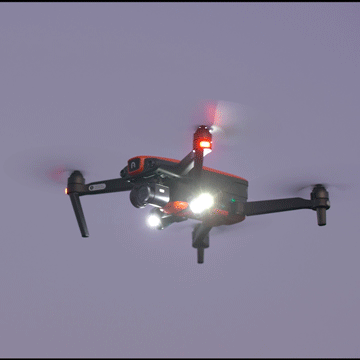
§ 107.29 Operation at night.(b) No person may operate a small unmanned aircraft system during periods of civil twilight unless the small unmanned aircraft has lighted anti-collision lighting visible for at least 3 statute miles that has a flash rate sufficient to avoid a collision.
https://www.ecfr.gov/current/title-14/chapter-I/subchapter-F/part-107/subpart-B/section-107.29
Anti-collision lights are small and light. They weigh anywhere from a few grams to 2 oz. and can mount to the drone with Velcro, adhesive, or a custom mount.
It's important to know that the onboard colored status/directional lights are NOT a suitable anti-collision light.
Smaller searchlights can illuminate objects up to 75 ft away from the drone. They are useful for close-range searches or indoors and they help the drone's sensors to avoid obstacles and land in dark environments.
These smaller searchlights will range in weight from 1.5 - 6 oz. They can fit on smaller drones like the DJI Mavic, Mini, and Parrot Anafi and not affect their performance or runtime drastically.
Often, searches must be conducted from a higher elevation because of topography, trees, buildings, or powerlines. These scenarios demand a more powerful search light. The D100 is a spotlight that can illuminate objects up to 200ft away. This light is suited for search and rescue operations and firefighting.
Unfortunately, the tradeoff for brighter, more powerful lights is weight and size. Larger drones like the Autel EVO II, DJI M30, and DJI Matrice have the lift capacity to fly with the additional weight of a searchlight without compromising flight performance.
When mapping or documenting a specific area at night, like a crime scene or traffic accident, scene lights are necessary to illuminate the scene for the drone's camera to capture the scene. Portable scene lights can be deployed rapidly and easily moved around a scene to achieve optimum lighting for mapping or documenting.
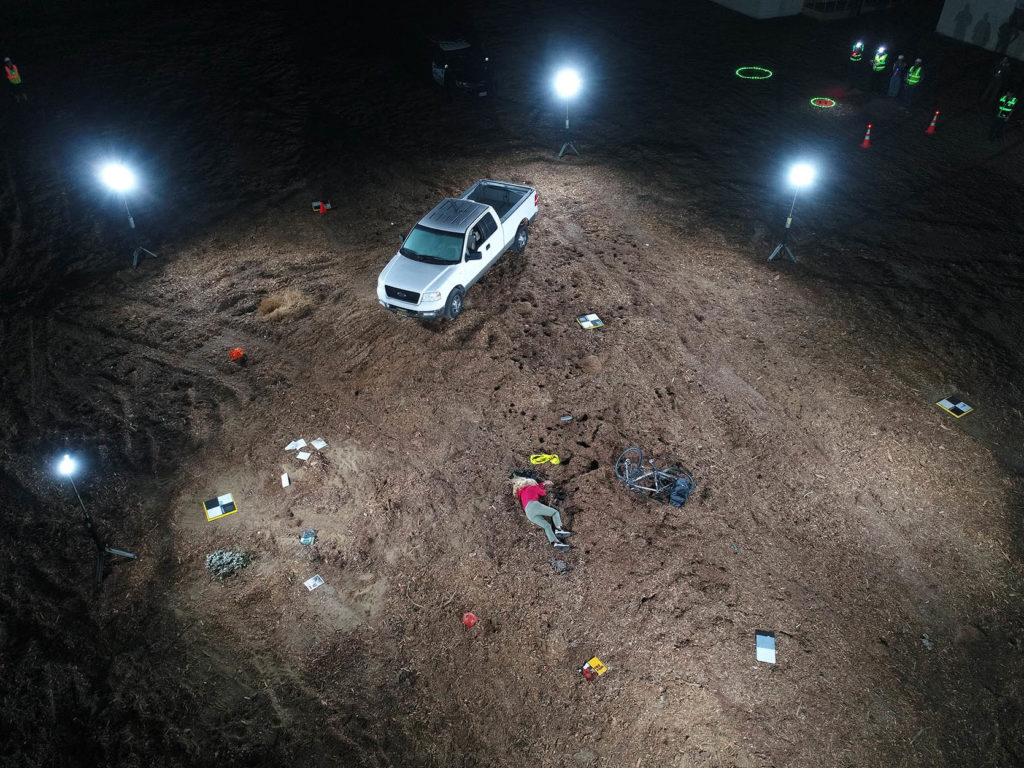
Drone lights provide objective lighting for the pilot, either through the drone's camera or from the ground. Drone mounted lights illuminate a scene, object, or area in a unique way that isn’t possible by conventional means on the ground. Lights helps the pilot, visual observer, and command center to more clearly see what the drone's camera is capturing.
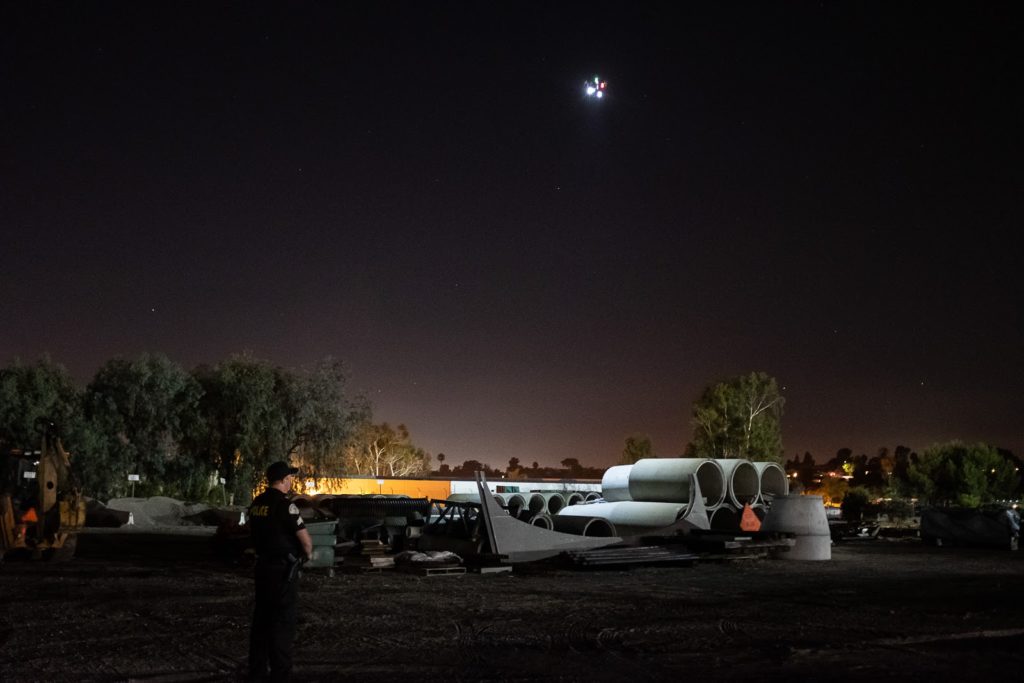
A pilot’s depth perception is compromised at night. The lack of visible objects to judge distance and space make it hard for the pilot to accurately determine how far away the aircraft is. This can result in a slow judgment and delayed reaction to flying conditions. It’s common for a pilot to think that the drone is directly over a distant object when, in fact, the drone is still 10 - 20 ft in front of or behind the object.
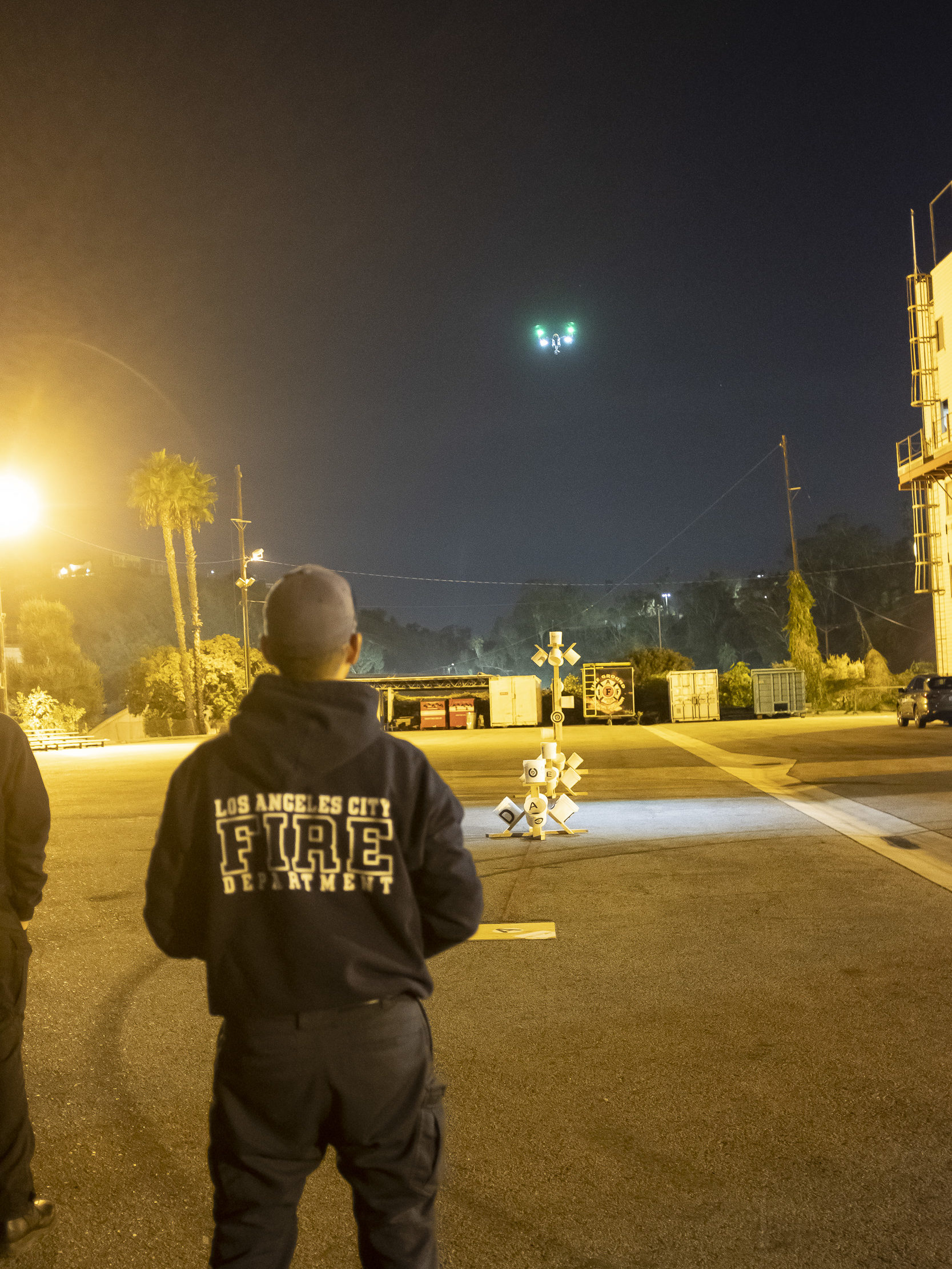
The use of a drone-mounted light positioned in a 90° nadir configuration can aid the pilot in determining their position by illuminating the area directly below the drone. This helps the pilot make faster and more accurate position judgments. In an emergency or search scenario, anything that can speed up reaction time can improve the chance of success for the mission.
Drones use optical sensors placed around the body for obstacle avoidance and landing. These sensors need to see objects to avoid them. When landing, the sensors measure the distance to the ground so the drone can achieve a controlled landing.
At night or in a dark building, optical sensors need light to see the ground or nearby obstacles. Obviously, without light, the drone will crash into obstacles. Additionally, it will stop and hold its position because it can't assess how far away an obstacle or the ground is for landing.
A drone camera’s sensor is dependent on quality lighting to obtain a high-resolution image. A dark scene forces the sensor to operate at a higher ISO (1600-6400) or a slower shutter speed. Both can result in a lower-quality image.
Lighting helps the camera capture at lower ISO (100-400) and obtain higher resolution images that have more detail. Lighting also increases the chances of getting sharper photos without motion blur by helping the camera shoot at a faster shutter speed.
Below are samples from a 1 /2.3” camera sensor, common on many smaller platform drones, consumer drones, and action cameras. The first shot is in a darkened room that would be equivalent to dusk light 15 - 20 minutes after sunset. Notice the significant amount of noise and low resolution. The text on the vest is hard to read, and the colors and background are muddied.
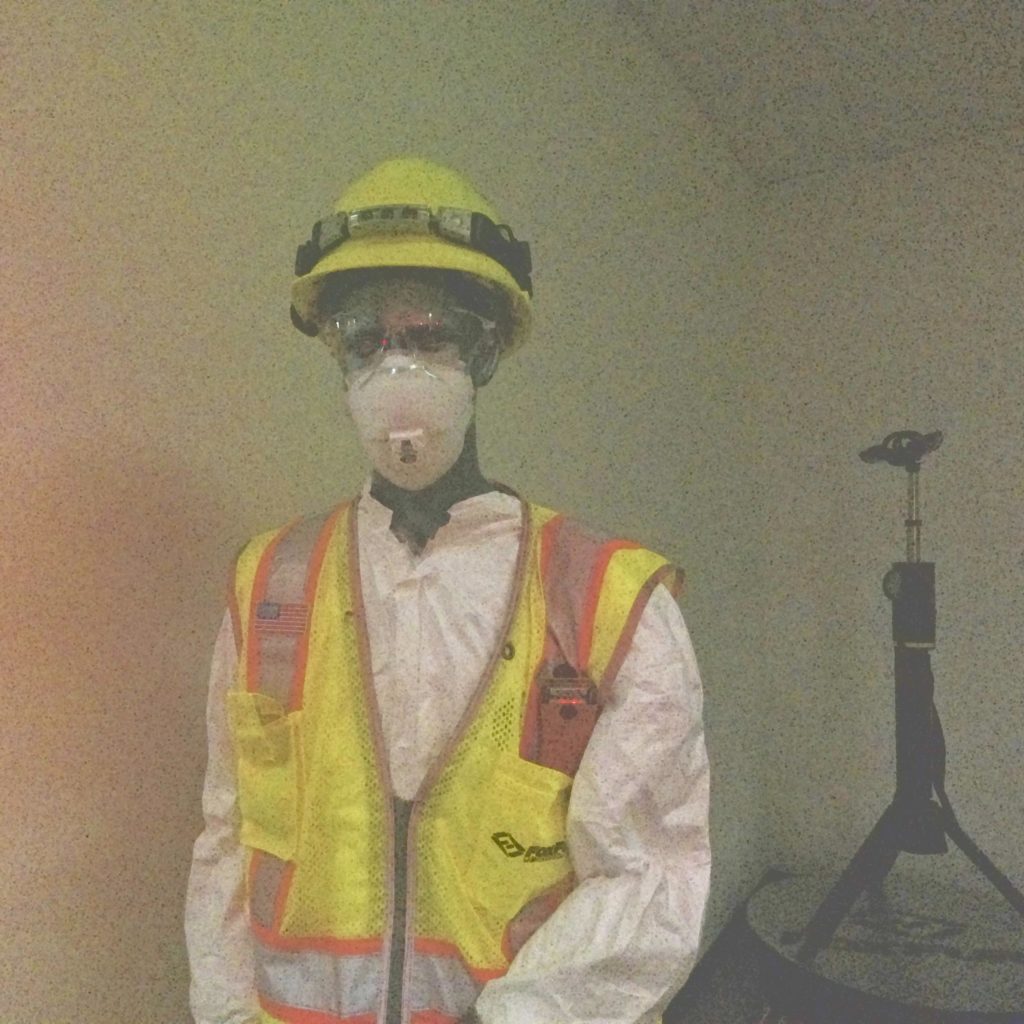
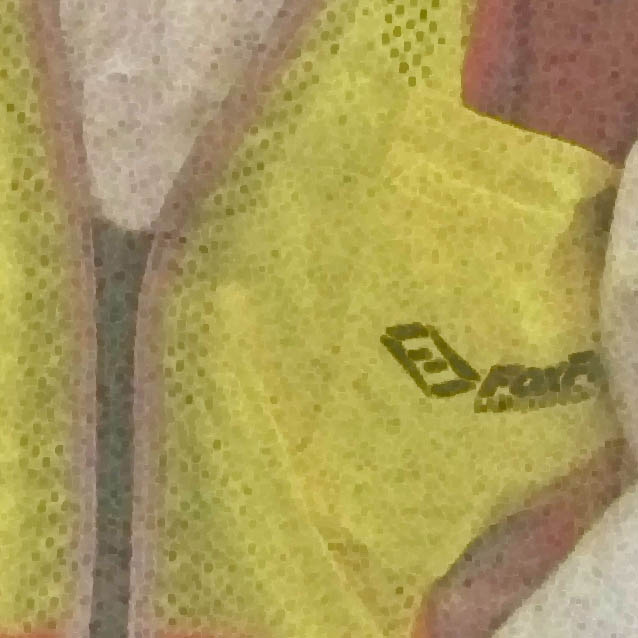
The photos below show the same scene with the same conditions, but the drone has a FoxFury Rugo light.
The drone's camera shot at a much lower ISO, resulting in more resolution and better color. The text on the vest is easily readable, and details in the background shadows are more visible.
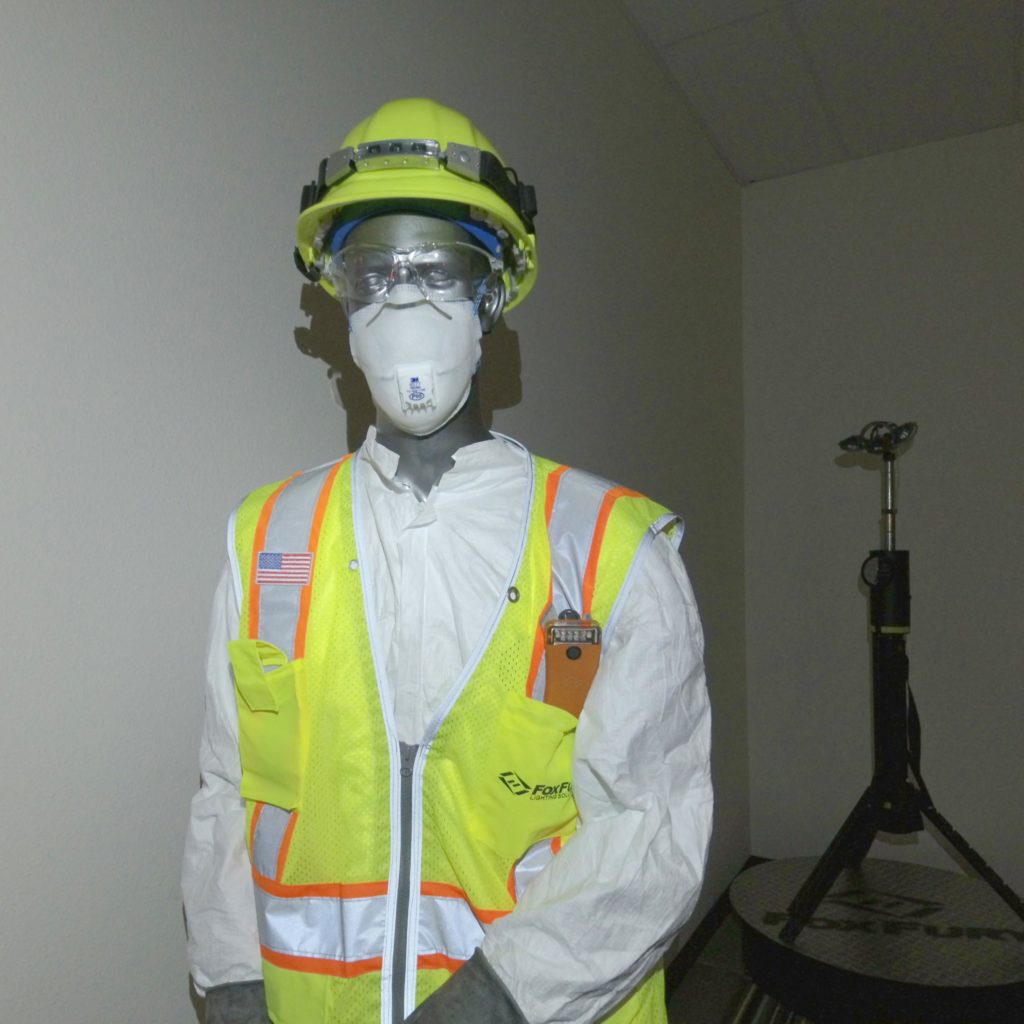
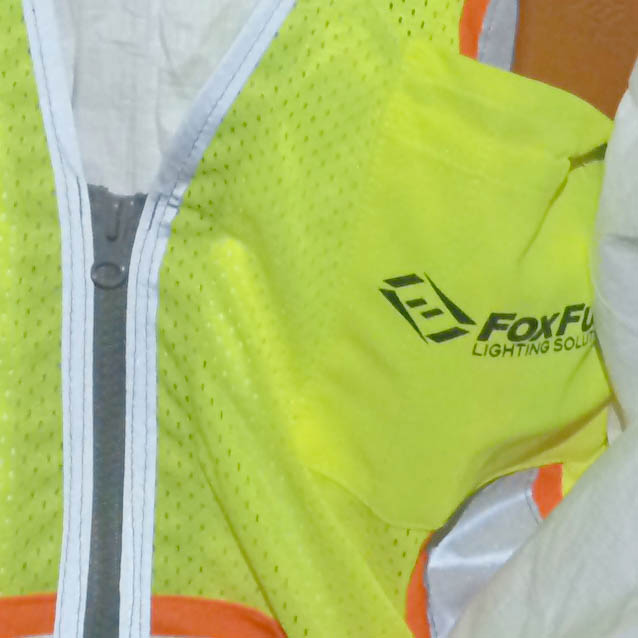
Larger sensors (1”) typically have better low light sensitivity, but any sensor will perform much better with increased light.
Resolution quality affects various applications differently. Fine resolution is critical in building or structure inspection for seeing small flaws, cracks, and debris. Lighting enhances the brightness, contrast, and proper color of the subject to aid in inspection.
Mapping and modeling software matches specific common elements in multiple photographs to create 2D and 3D models of a scene. The resolution and sharpness of the photos directly affect the accuracy of the model. If the images have a lot of noise, the software will have a hard time matching specific elements in the scene. Also, photos with motion blur will be rejected by the software because elements can’t be clearly identified.
Thermal cameras are commonly used in many applications like search and rescue and firefighting. They allow the pilot or command to see heat signatures and hot spots invisible with an RGB camera, such as a warm body in a cold forest or structure fire.

However, using only the thermal camera limits what the pilot can actually see. Objects that don’t have much variance in temperature from their surrounding area won't register on the thermal display. Objects like power lines or tree branches may not show up on a thermal display because they don't radiate any heat.
If using only the thermal image as a display when flying, it's possible to hit these types of obstacles, even in broad daylight. This is why it’s critical to have a visible display for situational awareness when flying.
When flying at night, navigation becomes even more difficult. As mentioned before, the pilot's vision is already compromised at night. Adding an additional thermal component just adds to the complexity.
Illumination from the drone lights will help the pilot avoid obstacles that may be invisible to a thermal camera or just hard in the dark.
In addition to helping the pilot with objective lighting, drone lights make the drone more visible to the pilot, VO (visual observer), or other aircraft. This is important in an emergency or first responder scenario where there is a lot of activity, both in the sky and on the ground. All teams need to have a clear, definitive visual of aircraft in the sky.
The Federal Aviation Administration (FAA) regulates that a drone flown between sunset and sunrise must be equipped with anti-collision lighting. These lights must have a strobe function that strobes between 40 - 100 cycles/minute. They also must be visible from 3 statute miles.
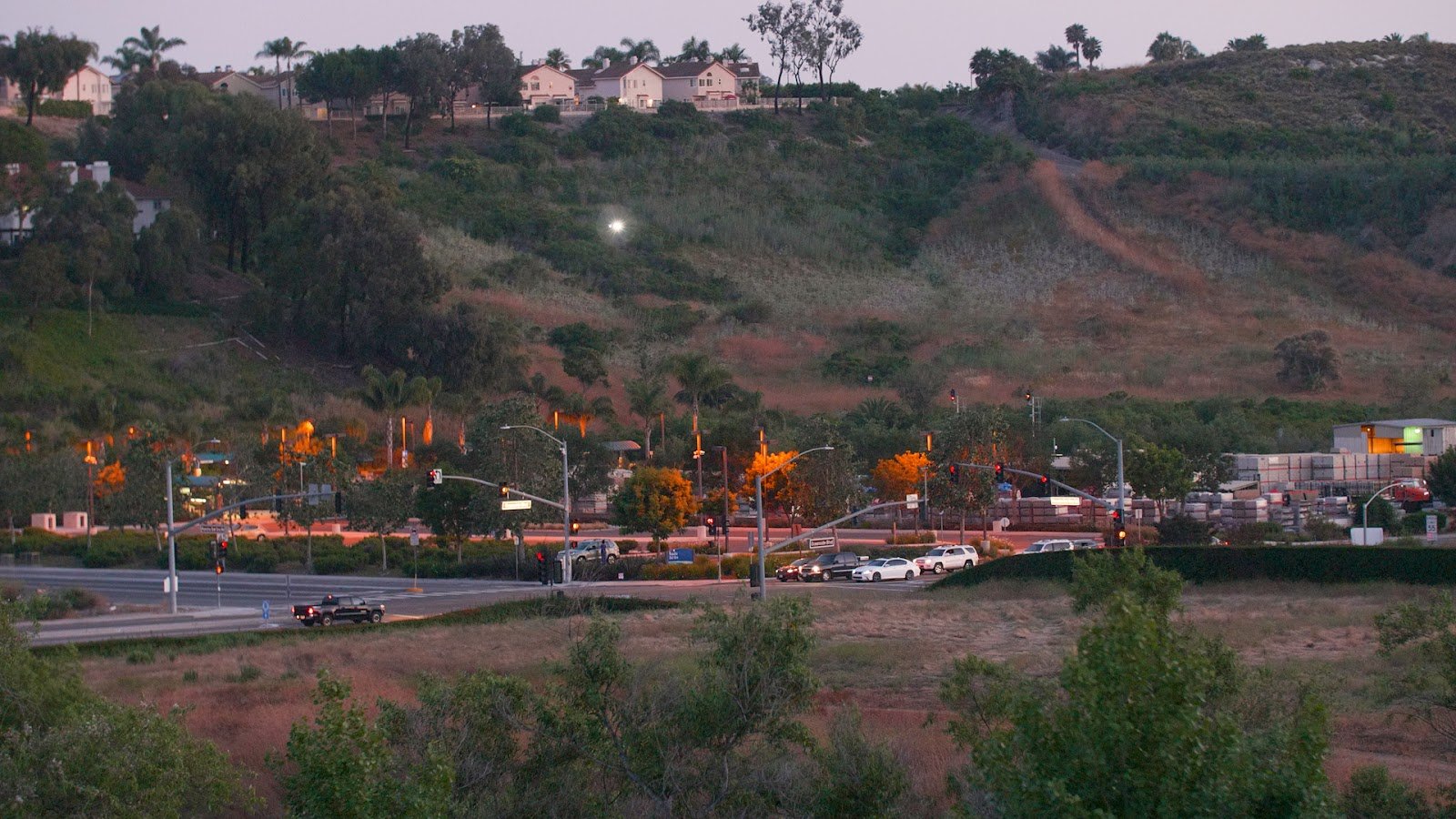
Sometimes pilots will outfit their drones with different colored lights to identify the direction of their drones at night. Red and green lights help the pilot determine the drone's heading more easily, especially when the drone is far away.
Flying in the dark requires greater concentration from the pilot and visual observer. It's harder to see the aircraft, especially at long distances. The pilot's depth perception is compromised, which makes their eyes work even harder. Shifting their focus from the controller display to the night sky also adds to the strain on their vision. All of this leads to increased eye fatigue for the pilot and VO.
A brighter strobing light mounted on the drone makes it easier for the pilot and VO to see the craft. This reduces eye strain and ultimately fatigue, especially if it is a long day or night of flying.
Different applications require different beam types from their lights. A light with a tight beam pattern will be better for a longer range search. This could be surveillance from a higher altitude or search and rescue.
A wide flood beam will be suited for close-range application where broad and even light is more advantageous, such as an indoor flight that requires sensors to see doorways and walls.
Some lights feature the ability to change the beam pattern for different applications.
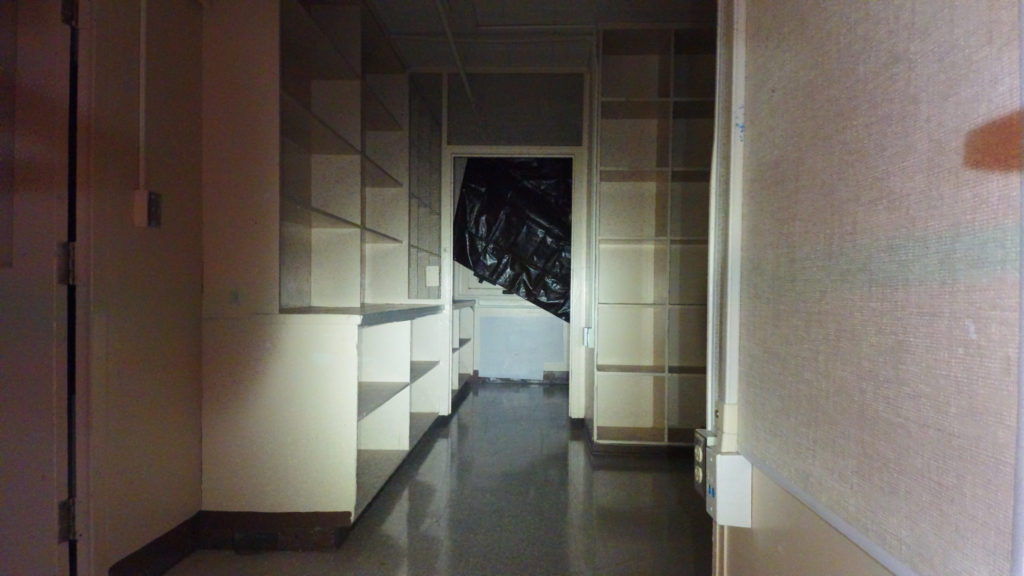
Most smaller drone lights are powered by rechargeable Lithium-Ion or LiPo batteries. These provide a respectable amount of runtime given their small size and weight.
Lithium-Ion batteries are the most common battery type for drone lights.
LiPo batteries have excellent power-to-weight and power-to-runtime ratios. The downside to LiPo batteries is that they have a finite number of recharge cycles.
LiPo batteries can become unstable if they are not used for a long period of time. This instability can result in thermal flash and fire. This is more of a possibility with larger LiPo batteries used to power drones.
Larger searchlights like the D100 can use removable batteries like 18650.
Drone light batteries are usually built into the light itself or are removable from the light for recharging.
Fixed battery lights require the light to be removed from the drone to be charged. This requires the pilot to have multiple lights accessible to switch out when one runs out of power.
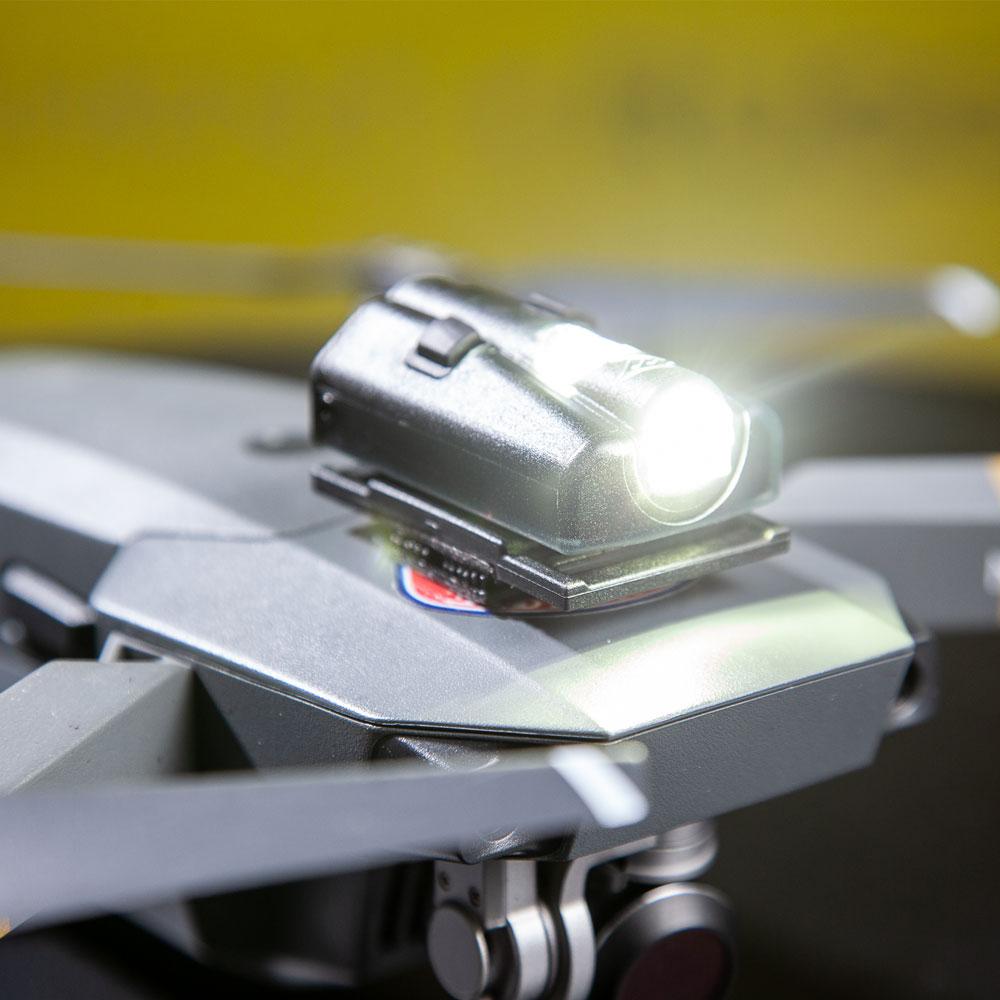
A removable battery allows the light head to stay affixed to the drone while the battery pack is removed for charging.
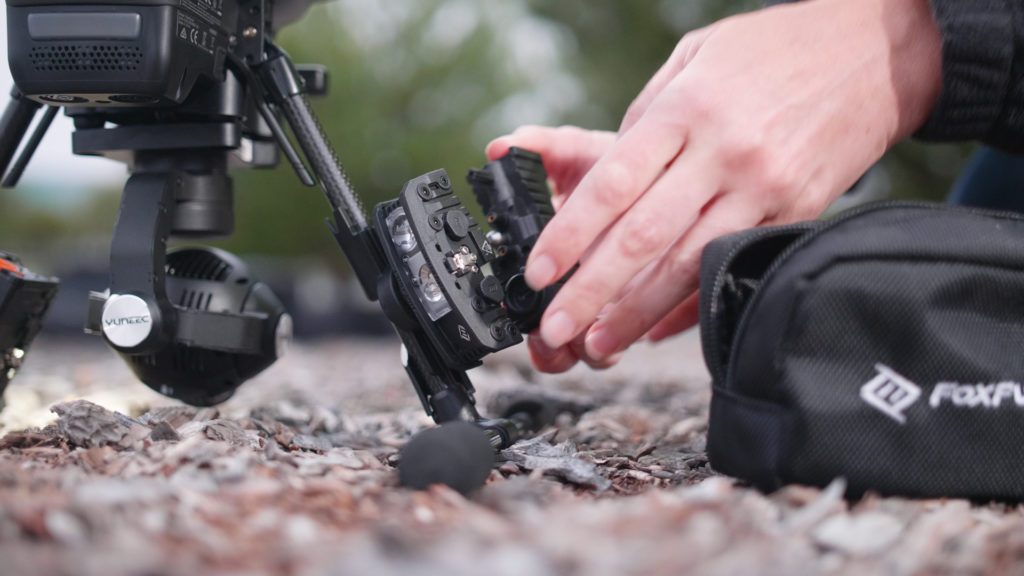
Some lights are hard-wired or directly connected to the drone's power supply. This is usually a custom configuration that requires a port or connection on the drone. A benefit to a hard-wired light is it allows the pilot to turn the light on and off or switch modes through the controller.
The downside is that if there are any issues with the light, it could affect the electronics and flight of the drone.
Weight is such an important consideration when choosing lights. If the lights are too heavy, it will negatively affect the runtime and performance of the drone. Carefully test your drone with additional lights to determine its capability with the additional payload.
Mount the lights in a position neutral to the center of gravity on the drone. Also, be careful not to obstruct any sensors, antennas, or moving parts.
Waterproofing on drone lights is a big benefit. Even though most drones are not very waterproof themselves, manufacturers are designing more water-resistant drones to meet professional users' needs, especially in public safety and industrial applications.
Pilots often need to fly in adverse conditions like rain, sleet, or snow. The lights on their drones need to be able to handle those same conditions. Also, if there is an accident and the drone falls in a lake or river, at least the lights can be recovered from the wreckage.
When assessing an active fire or damage, an aerial view of a fire incident can provide additional intel to firefighters on the ground. A drone positioned on the backside of a building or above the roof can see activity that can't be seen from the initial angle of attack.
Thermal imaging can identify hotspots in the roof where the fire is building inside the structure. Thermal imaging will be the drone's primary use, but lights will illuminate any hazards like branches or power lines that could be a problem while flying.
A drone positioned above the scene provides an overwatch of an incident or area. This gives incident command with a unique wide-scale visual of everything that's happening. The drone can provide intel to firefighters on the ground of problems or issues that they may not be aware of or can't see from the ground.
Drones can be flown into areas that are structurally not safe for investigators to physically go into, such as a multi-story building where the floors are damaged and compromised. After a fire, there is no electricity in the building. A UAV equipped with lights can be flown through the building and provide a video feed for investigators to assess the damage.
If a victim is stranded in an area where responders can't reach them, a drone can deliver medicine or first aid to the victim. Searchlights on the drone can be used to find the victim and drop supplies to them. The drone then acts as a beacon for responders to access the victim.
The deployment of drones in wildfire situations is beneficial for overwatch. The drone provides overwatch for the Incident Command to monitor fire spread, fire lines, and safe zones. The drone can also assess unburned fuels that pose a threat on the front end of the fire.
In locations where retreat and escape for firefighters can be difficult, the drone provides critical real-time data and intel to assist in their survival.
Drones are used for overwatch in warrant serve scenarios. The drone, equipped with a telephoto camera, can monitor a property, entrances, how many people are present, and if they are armed. This is invaluable intel to law enforcement to know what to plan for. This additional intel can reduce potential surprises and unnecessary violence at tense stand-offs.
The drone can also provide overwatch of the scene during the warrant serves to see if anybody exits out of a back or side door or is armed or threatening.
Drones provide a means to search the inside of a building during a hostage scenario, bomb threat, or active shooter scenario. Police can gather intel without putting officers into life-threatening situations.
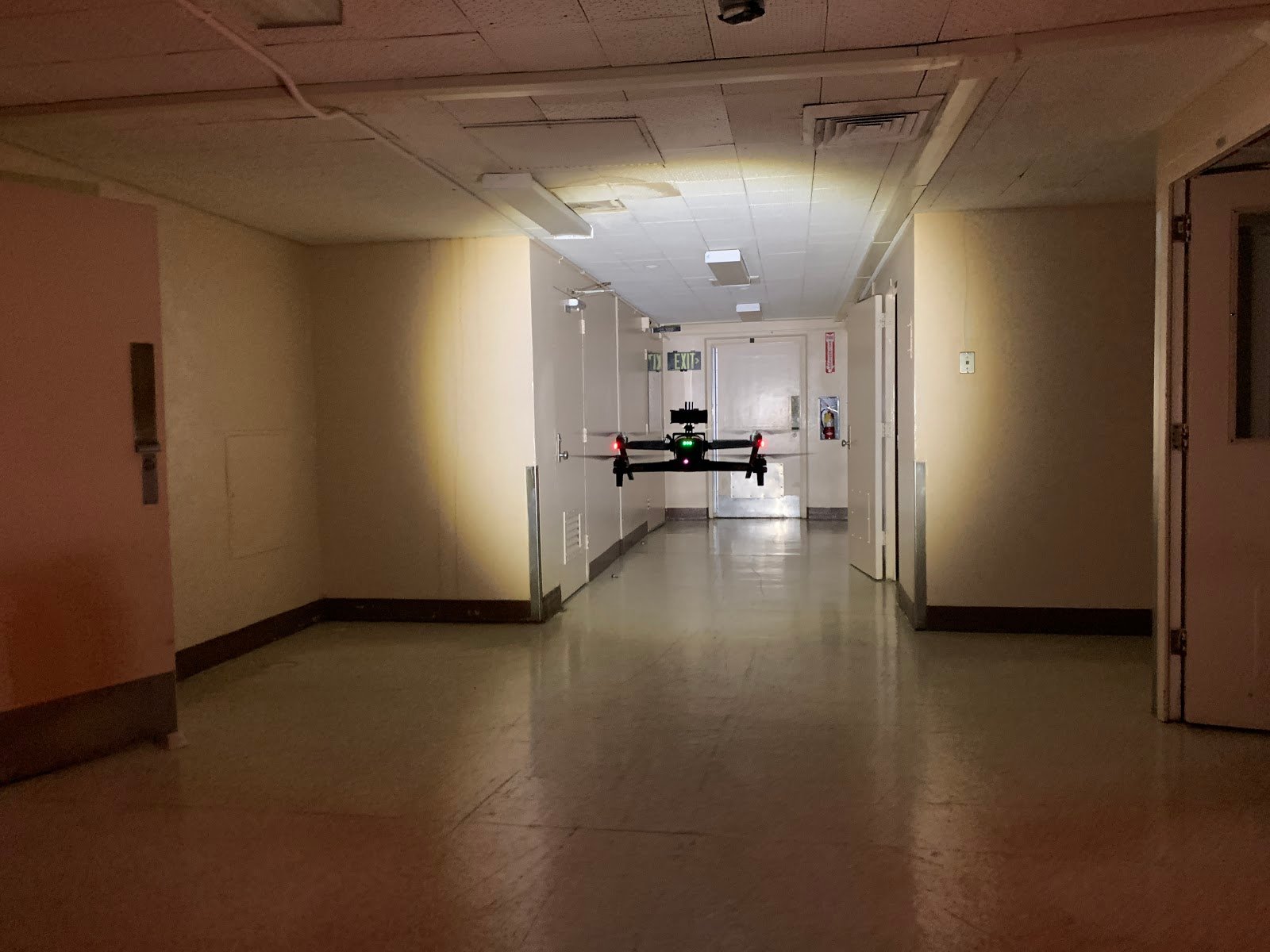
Like above, SWAT teams can recon an area ahead of a tactical team with a constant white light and RGB camera.
They can deploy a drone with a distraction device like strobing light and loud sound ahead of a SWAT team to provide a tactical advantage for the team.
Another solution is utilizing IR lighting on the drone along with thermal or night vision goggles. This illuminates an area for the SWAT team without providing light for suspects.
A drone, equipped with sensors and lights, can be used to detect toxic gas or chemical leaks. The sensors detect the gas or chemicals. The lights will provide illumination for the camera to pilot through the structure. The lights also assist the camera in capturing a high-resolution image of damage or instrument settings for assessment.
Drones are quickly becoming an indispensable tool for accident investigators. Investigation teams can quickly photograph a crime or accident scene to create 3D models. Investigators can then open up roadways faster after an accident.
While drones are used mostly during the day, night reconstruction has proved more difficult. Using portable, high powered scene lights allows drones to capture high resolution images of the accident scene. High quality images are essential for building a quality model of the scene.
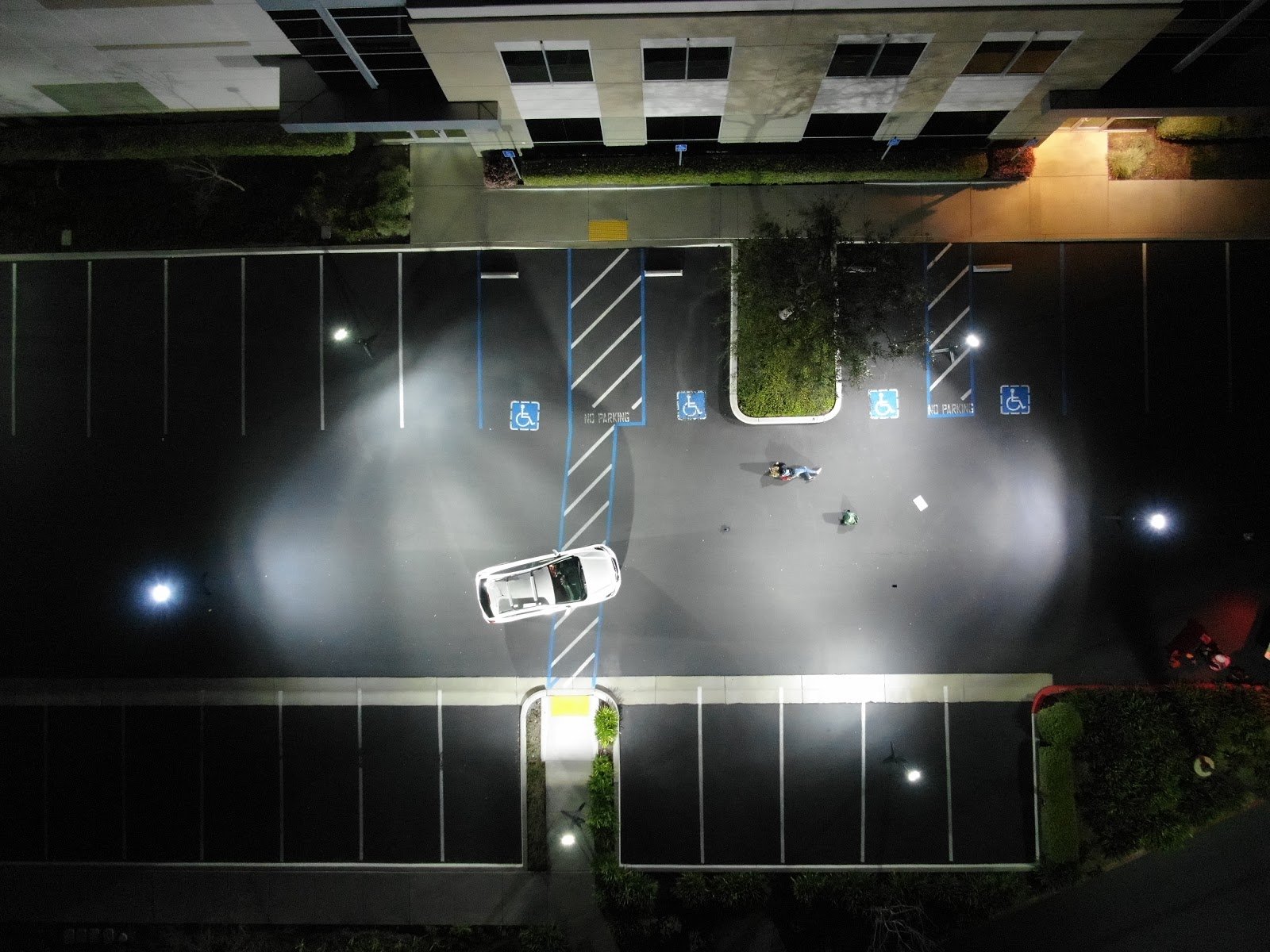
A drone equipped with a powerful spotlight can be flown over more difficult areas, or even impossible, for ground search parties to access. When the drone locates a lost or injured person, the drone's lights can act as a beacon for search parties to move towards to assist the lost person. Once the victim has been reached, the drone acts as a beacon to help lead the party back out of the area.
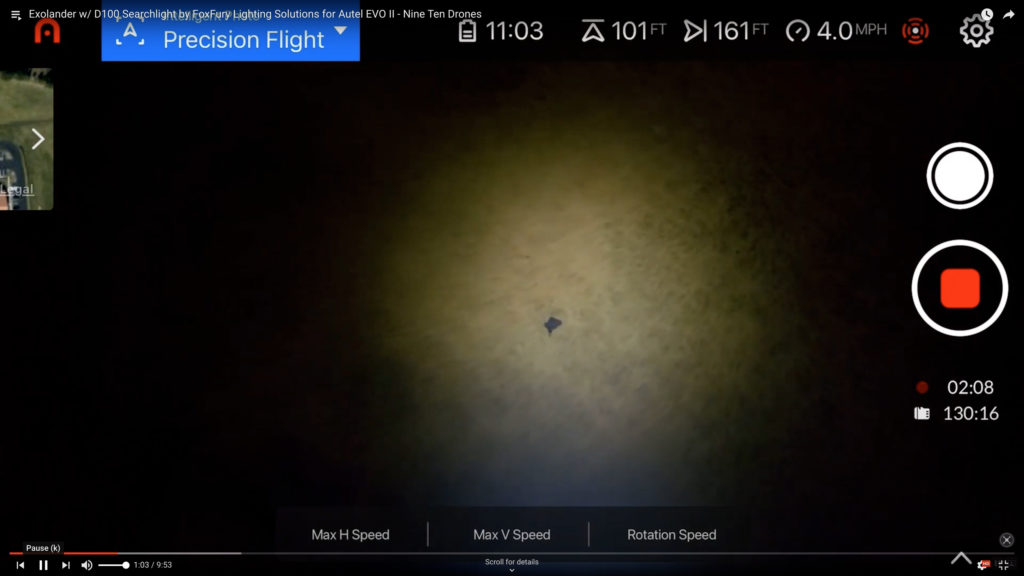
Most tower inspections are completed during the day. Some software apps work better with footage shot at night. If the drone illuminates the subject and the background is dark, the software can better isolate the tower and differentiate between the tower and the background.
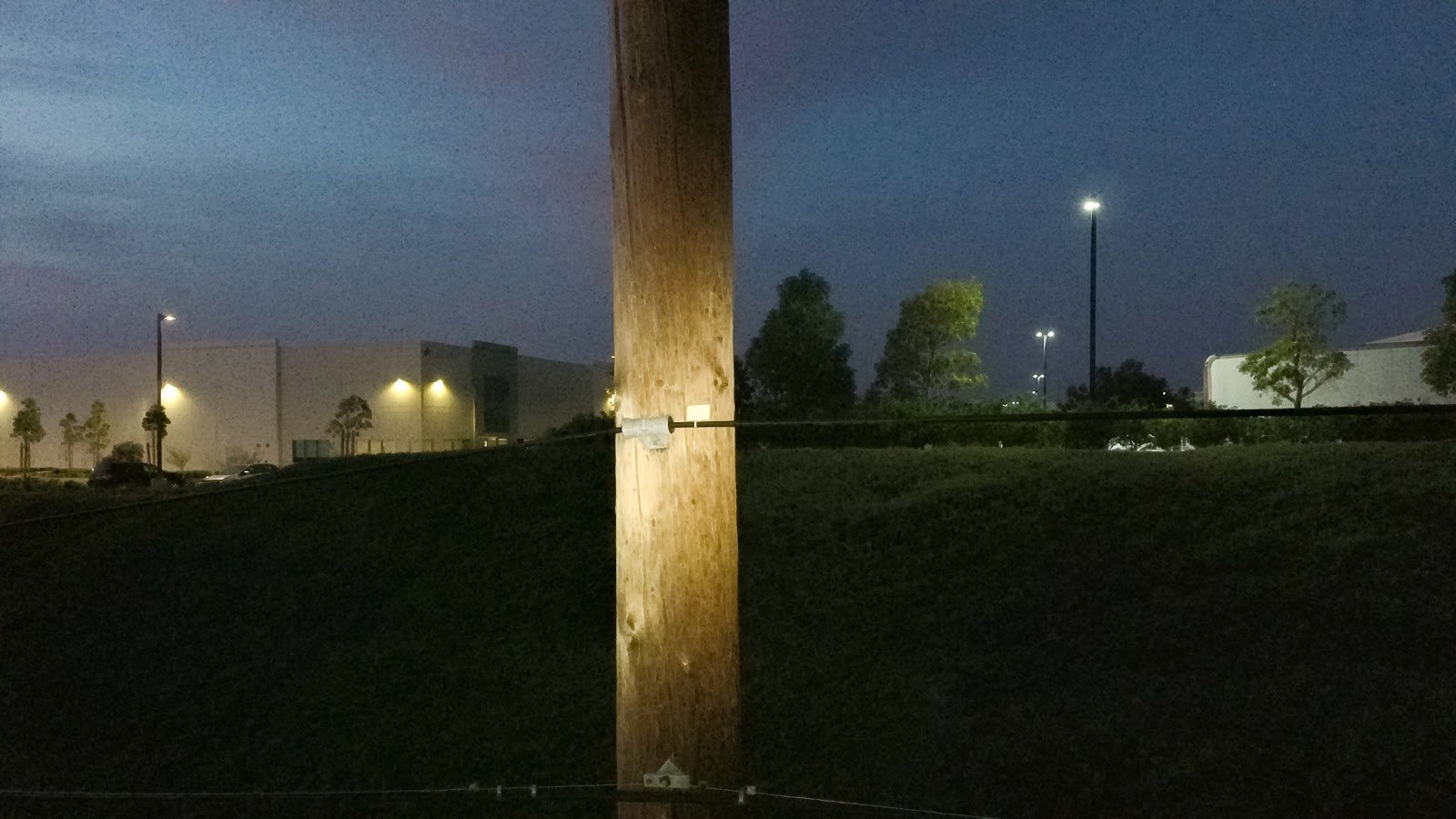
A farmer can use a drone equipped with lights to assess the damage from a storm in a fraction of the time and hassle then it would take by driving or walking the property.
In some cases, the farmer may not be able to travel over roads that are too damaged or flooded from water. A flight around a decent-sized farm could take 15-30 minutes. A farmer can immediately schedule repairs or harvesting labor to avoid loss of crops.
Ranchers use drones to take inventory of their cattle. While usually in the day, drone with lights can help ranchers search for lost cattle or check specific areas where cattle may get stuck or injured.
Tens of thousands of bridges in the US are structurally deficient or in need of repair. Drones can inspect bridges in a fraction of time as it would take inspectors to physically inspect them. In some cases, there are areas on large bridges that are extremely difficult or impossible for inspectors to access.
Bridges are inherently dark and shadowed. Drones are perfect tools for these situations. Lights on the drone can light up dark corners and recesses on the underside of bridges for photos and video feeds.
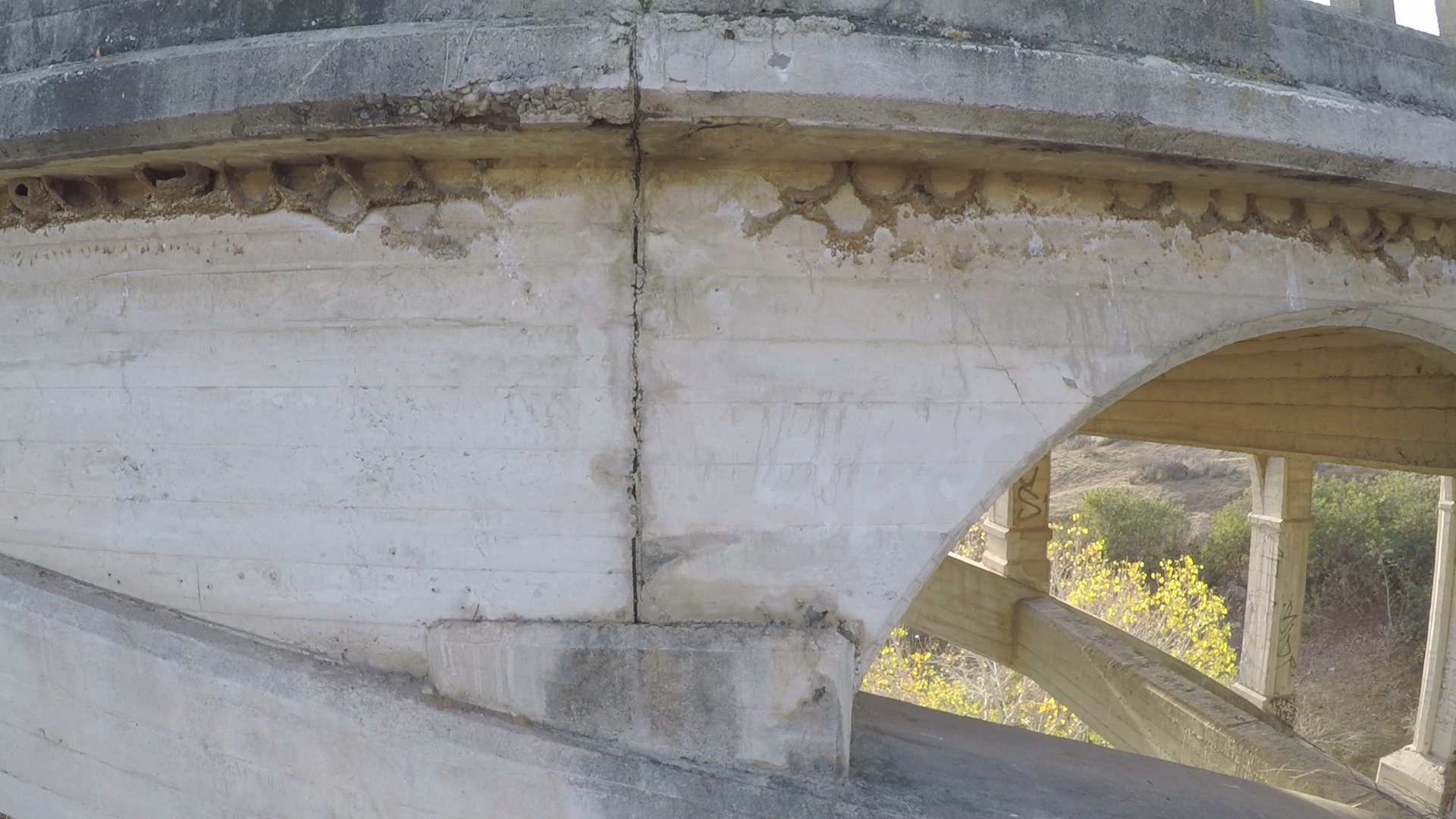
Just because the sun goes down, doesn’t mean the need to fly ceases. While most flight operations are done during the day, some circumstances require night flights as well. Sometimes, that’s when drones can be the most effective.
Lights help us to see where we are flying or what we are searching for. Whether it's searching the interior of an abandoned building or looking for a lost hiker in the wilderness, drone lights make it possible to use drones as search tools at night or in the dark.
But more importantly, lights allow us to fly safer by making the drone more visible to other pilots in the sky. Up until now, the FAA only mandated that drones be equipped with lights when flown at night. Upcoming changes from the FAA will require drones to have anti-collision lights for all flights, no matter what time of day.
There are more and more types of lights introduced to the market every day. It's important to look at your needs to determine what size, brightness, and features you need to accomplish your mission.
That depends on the types of work you are doing and what you need your drone to do. Sometimes, the big, expensive drone is overkill for your needs, and a smaller, less expensive drone will handle all of your requirements. The same goes for lighting.
The proper lighting will make your flights more successful and safer.



Enter your details below to save your shopping cart for later.